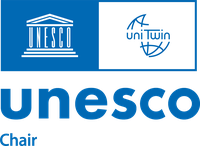Climate change continues to affect the availability of water around the world, with agro-pastoral communities in East Africa being particularly hard hit. Effective, targeted water management strategies are desperately needed if such populations are to continue thriving. Community-based natural resource management (CBNRM) represents a bottom-up approach in which local people from various social fields act collectively to address water scarcity concerns. This qualitative case study sought to explore and describe the factors that lead to the emergence of collective action within the context of CBNRM. The four research concepts that guided the study were: water access and use; common issues within the community; levels of interaction; and sociodemographic characteristics. Seventeen interviews were conducted through purposive sampling of residents in Lamuria, an agro-pastoral village in Laikipia County, Kenya from March - July 2011. The study looked at collective action from an interactional field theory perspective and employed an interpretative phenomenological analysis (IPA) to analyze and synthesize the findings. The findings indicate that access to water is a significant concern for participants particularly during the dry seasons and in times of drought. Most of the participants retrieve their water from local rivers, although results varied when it came to boiling and treating the drinking water. Water groups do exist though it remains to be determined how closely they embody the principles of CBNRM. Participants were engaged in other forms of collective action through self-help groups focused on a variety local issues including agricultural enterprises, general health and welfare, education, and financing. Church and sports were the most popular events through which participants interacted with other community members. The participants were deeply rooted in the community with an average length of residence of 21.5 years and an average household size of 4.5 persons. Participants’ level of education and employment status varied. This study concludes with a series of implications and recommendations for applied work and research.
![]() Bradley Olson Thesis FINAL.pdf
— 2.1 MB
Bradley Olson Thesis FINAL.pdf
— 2.1 MB





